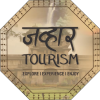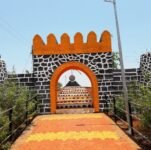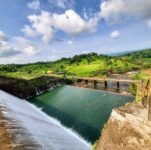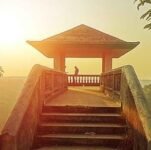
Dabhosa Waterfall
Jawhar — Land of Waterfalls and Tribal Heritage
Dabhosa Waterfall is a scenic waterfall located in Jawhar, Maharashtra, India. Here are some details about Dabhosa Waterfall:
– Location: Dabhosa Waterfall is situated in the Sahyadri Range, approximately 15 kilometers from Jawhar city.
– Height: The waterfall is known for its majestic cascade.
– Best Time to Visit: The best time to visit Dabhosa Waterfall is during the monsoon season (July to September) when the waterfall is at its peak.
– Trek Details:
– Distance: The trek to Dabhosa Waterfall is relatively short.
– Difficulty Level: The trek is considered moderate.
– Activities:
– Swimming: Visitors can enjoy swimming in the natural pool at the base of the waterfall.
– Trekking: The trek offers scenic views of the surrounding hills and forests.
– Tips:
– Wear comfortable shoes and clothing suitable for trekking.
– Carry insect repellent, water, and snacks.
– Be cautious while swimming or exploring the waterfall area.
Dabhosa Waterfall is one of the popular attractions in Jawhar, known for its natural beauty and serene surroundings. If you’re planning to visit, consider exploring other nearby attractions like Kalmandvi Waterfall or Jai Vilas Palace.
Related Post
Submit a Review









